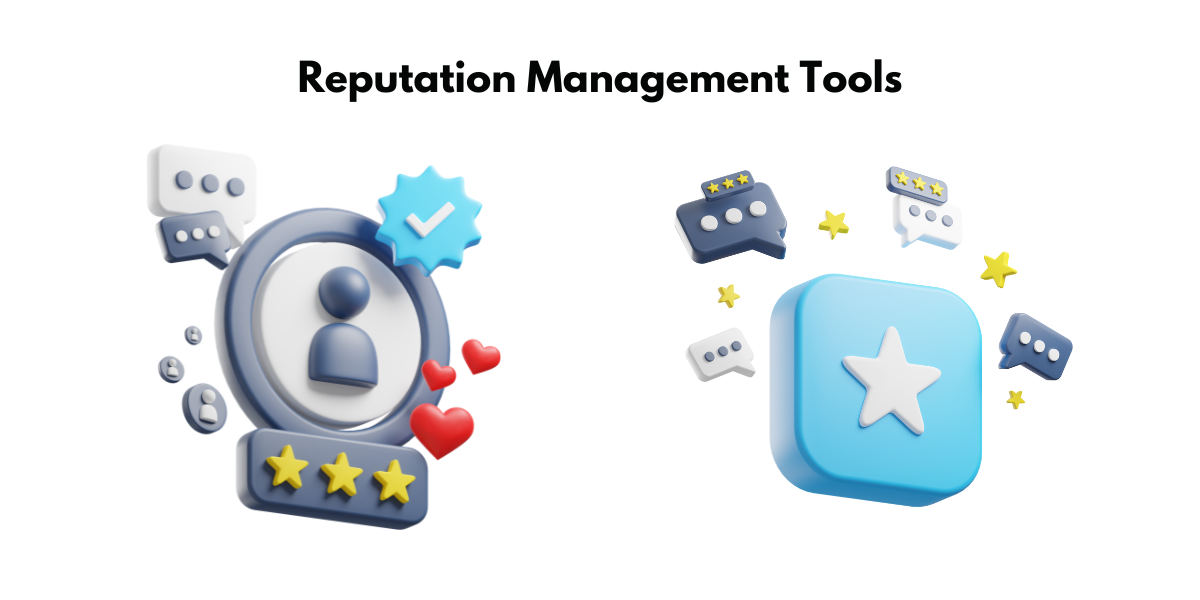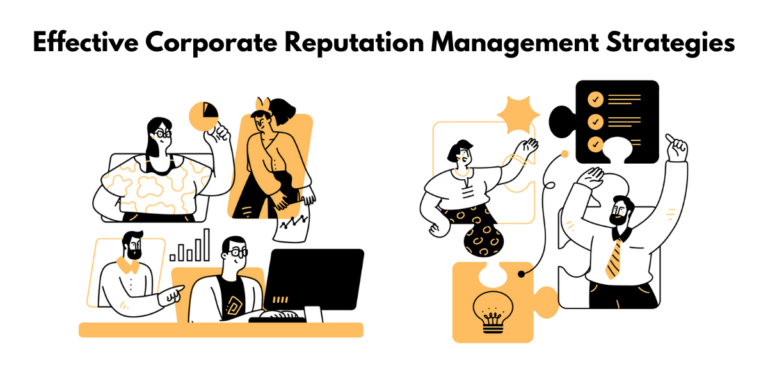Introduction to Online Reputation Management
The Importance of Your Business’s Online Reputation
Online reputation management is crucial for every business’s success in the digital era. With a focus on improving your reputation health, it becomes evident that your online reputation can significantly impact your brand’s credibility, trustworthiness, and market visibility. With 85% of potential customers turning to the internet for pre-purchase research, it’s imperative to use reputation marketing tools to analyze and manage your company’s digital presence. Your online reputation is not merely a strategic asset; it’s a potent competitive advantage that distinguishes your brand from competitors, enhancing your brand awareness. Harnessing this advantage, not to mention improving your reputation score, could tip the scales in your brand’s favor.
Understanding the Impact of Negative Reviews and Spam
Negative comments, spam, and shoddy reviews possess the potential to tarnish your company’s reputation drastically. Even a handful of adverse online sentiments can skew customer perception, affecting business reach and trustworthiness. Studies show that 72% of customers will take action only after reading a positive review. Hence, understanding and addressing the genesis of negative reviews is a crucial aspect of managing your company’s online reputation. Moreover, spam, irrelevant, or malicious content can leave potential customers confused and could lead to a decline in your digital relevance and visibility.

Insight into Online Reputation Management Tools
Selecting the Right Tool for Your Business
When it comes to choosing the right tool for reputation management, businesses should take their unique needs and circumstances into consideration. Massive enterprises may opt for comprehensive solutions like Awario or Sentione, tools designed to monitor, manage, and maximize the online reputation, while a smaller set-up might find Reputology or Buzzsumo brand more in line with their needs. Options like Brand24 and Mention are generally a good fit for most businesses, especially as these offer unique features like social media monitoring and listening tools. Here are a few aspects you should consider:
- Business Size and Niche: Be it a local restaurant, a SaaS start-up, or a giant e-commerce company, each will have distinct needs. Therefore, your business size and industry niche play a crucial role in selecting the appropriate media monitoring tool.
- User-Friendliness: The software you choose should be easy to navigate for all users, acting as a functional social media management tool. It should promote easy integration with your current system. Tools requiring on-site installations or causing problems while integrating with your existing platforms should be avoided.
- Budget: Pricing is a significant variable. Comparing different pricing plans, understand what each of them offers in terms of services. Smaller to medium companies might not afford the most popular reputation management tools simply because of their price.

With these considerations in mind, coupled with informed knowledge about tools like Awario, Sentione, Reputology, and Buzzsumo, you could narrow down your options and make an informed decision that suits your business best.
Comprehensive Features of Reputation Management Tools
Review Monitoring and Response Management
One of the critical features of an online reputation management tool is the ability to monitor and manage customer reviews effectively. Businesses require a platform that has not just wide coverage but also offers real-time alerts for every new input. This feature allows the company to respond promptly to any negative reviews before they cause any damage.
For instance, ReviewInc is an industry-leading review management software known for its comprehensive platform. It is designed to keep an eye on over 600 review sites, the highest among its competitors. This broad coverage reduces the risk of missing out on any review opportunities.
Along with monitoring, ReviewInc enables businesses to respond directly to reviewers, resolve issues, and attain real-time automated alerts. This feature ensures your business always stays on top of its online reputation and swiftly addresses any potential threats.
Given these features, review monitoring, and response management can greatly enhance your business’s online image while maintaining a positive relationship with your customers.
Social Media Monitoring and Messaging
In today’s social media-driven world, monitoring your brand’s social media presence is vital for maintaining a good online reputation. Tools like Mention help brands monitor their presence across social media platforms, including Facebook, Twitter, LinkedIn, Instagram, and YouTube. Mention scans over 1 billion sources daily, ensuring businesses never miss out on any mention of their brand name.
Crafting messages that are consistent with your brand’s voice and responding promptly to social media interactions form the backbone of your business’s social media strategy. Hootsuite is one such tool that streamlines this process. Hootsuite allows businesses to manage and schedule posts across several social media channels from a single dashboard, thereby maintaining a coherent brand voice and ensuring timely interaction with their audience.
Furthermore, through social sentiment analysis, these tools help brands decipher the tonality (positive, negative, or neutral) of social media comments and posts, assisting them in understanding the general sentiment about their brand online.
Thus, by leveraging social media monitoring and messaging, businesses can effectively manage their online reputation, engage their online community, respond to happenings in real time, and grow their online footprint.

Centralized Inbox and Surveys
A centralized inbox is an integral part of any reputation management strategy, compiling and organizing every customer interaction in one place, thereby preventing any miscommunication or missed conversation. This attribute allows you to track and respond to various communication channels effortlessly, including emails, customer surveys, and social media interactions.
Furthermore, businesses can use online surveys to collect valuable customer feedback. By understanding how clients feel about their products or services, companies can work towards addressing any significant concerns with confidence. Tools such as Qualtrics offer a feature-rich platform facilitating the creation, customization, and analysis of surveys. Businesses can incorporate these into their websites, helping them gather and understand customer sentiments.
Finally, the feedback and insights gathered from surveys and centralized inbox interactions can be transformed into actionable strategies to gain a competitive advantage in the marketplace, hence the key to an effective reputation management strategy.
Practical Guide to Using These Tools Effectively
Steps to Proactively Improve Online Reputation
Actively improving your online reputation involves several strategic steps:
- Monitor Your Online Presence: Use a reputation management tool to track comments, reviews, mentions, and any interactions that involve your brand across the entirety of the internet.
- Create High-Quality, Positive Content: Develop high-quality content that engages with your audience and reflects your brand positively. This content should be better than any existing negative online material to motivate search engines to rank your new content higher.
- Optimize Your Content: Use good search engine optimization techniques, including proper keywords, meta descriptions, title tags, and quality links from reputable third-party sources. These factors influence how search engines rank your content.
- Engage with Your Audience: Respond promptly to customer reviews, comments, queries, or concerns. Engaging with your audience builds strong customer relationships and enhances your brand reputation.
- Use Social Media Wisely: Leverage the power of social media to cement your brand presence and reputation online. Be active, share positive reviews and testimonials, and interact frequently with your followers.
- Request for Reviews: Encourage your satisfied customers to leave positive reviews. This strategy not only neutralizes negative reviews but also paints a positive image of your brand.
- Handle Negative Reviews Appropriately: Respond to negative reviews in a respectful and understanding manner. In some cases, you may even turn a negative review into a positive customer experience.
By following these steps, businesses can proactively manage and improve their online reputation.

Winning Strategies for Retargeting and Reconnecting with Customers
Successfully retargeting and reconnecting with customers requires a comprehensive strategy that considers the unique expectations and preferences of your customers. Here are a few winning strategies:
- Leverage Customer Data: Use customers’ previous interactions, including shopping history, viewed products, and feedback to tailor personalized outreach. This connection can significantly improve customer engagement and foster loyalty.
- Use Email Marketing: Send targeted emails or newsletters to keep customers informed about your brand, new product updates, and personalized offers.
- Retarget Through Social Media: Utilize social media platforms’ retargeting capabilities to remind customers of their previously viewed products or related recommendations.
- Offer Exclusive Deals: Create special offers or loyalty programs targeted specifically towards returning customers. This gesture not only encourages them to revisit your platform but also reinforces their perception of your brand as one that values its customers.
- Optimize Your Website: Ensure that your website or online store is easy to navigate, with a streamlined checkout process. A friendly user experience can be a significant factor in attracting repeat visits from customers.
- Provide Exceptional Customer Service: Excellent service can transform a one-time customer into a loyal patron. Make sure customer inquiries and issues are dealt with promptly and satisfactorily.
By adopting these strategies, you can effectively retarget and reconnect with customers, thereby enhancing customer retention and increasing your brand’s reputation.
Frequently Asked Questions (FAQs)

What is the Best Way to Get More Five-Star Reviews?
The best way to get more five-star reviews is, first and foremost, to provide an excellent customer experience. Happy customers are more inclined to leave positive reviews. Here are a few proven strategies:
- Ask for Reviews: After a purchase or service is provided, ask your customers for feedback. Tools like GetFiveStars or GatherUp can send automated email or text messages to customers requesting a review.
- Make it Easy: Ensure that the review-writing process is a breeze for your customers. This could mean providing a direct link to your review platform, or simplifying the necessary steps to leave a review.
- Respond to All Reviews: Respond to both positive and negative reviews promptly and professionally. This shows potential reviewers that their feedback will be acknowledged and appreciated, thereby creating an avenue for better customer engagement.
- Incentivize Reviews: While it’s crucial not to bribe for positive reviews explicitly, incentivizing the review process can motivate customers. Offering discount codes or entering reviewers into a prize draw are two popular methods.
- Leverage Social Proof: Highlight positive reviews on your website and social media platforms to showcase them as social proof. This visibility not only increases trust among potential customers but also encourages more customers to leave reviews.
Remember, the main focus should be on improving customer experience and satisfaction. Positive reviews will naturally follow a positive customer journey.

How Do I Identify Fake Reviews?
Fake reviews can damage a business’s reputation and mislead potential customers. Therefore, businesses must develop an effective strategy to identify and deal with this issue. Here are some ways to identify fake reviews:
- Extreme Language and Excessive Use of Superlatives: Fake reviews might use excessive language, either extremely positive or negative. They might also overuse superlatives like “best,” “greatest,” etc.
- Reviewer Profile: Look for patterns in reviewer profiles. If a reviewer has only one review or all their reviews are either extremely negative or positive, it can be a sign of a fake review.
- Focus on Competitors: If the review strongly recommends a competitor or disparages them in the review subtly, be suspicious.
- Irrelevant Details: Fake reviews often contain irrelevant details about unrelated aspects or overly long anecdotes.
- Look for Patterns: If multiple reviews use similar language, mention the same obscure details, or are posted within a short period, there’s a good chance they’re not authentic.
- Check Reviewer History: Verify if the reviewer has a history of leaving either overly positive or negative reviews for different companies, which might indicate a pattern of fake reviewing.
Remember, while you cannot remove reviews from platforms like Google, you can report suspicious activities. For critical platforms that you rely on for your business, consider reputation management tools like Google Alerts, Mention, and ReviewTrackers, which can help identify fake reviews early, allowing you to address them promptly.
What types of data can an online reputation management tool track?
Effective online reputation management tools can track a myriad of data points, enabling businesses to maintain and improve their online reputation. Here are some of the essential types of data these tools can track:
- Brand Mentions: The software can monitor every time your brand or company is mentioned online. This data can be assessed according to volume, reach, sentiment, source, and language among other factors.
- Reviews and Ratings: This involves monitoring online reviews, ratings, and feedback given by customers across various platforms like Google, Facebook, Yelp, or industry-specific review sites.
- Social Media Sentiment: By assessing social media interactions, these tools can determine the overall sentiment towards your brand and identify trending topics among your audience.
- Competitor Analysis: Some reputation management tools provide competitor monitoring that tracks your competitors’ online presence and reputation, enabling you to understand your market position better.
- Keyword or Hashtag Tracking: Tracking specific keywords or hashtags can highlight what is being said about key aspects of your business, products, or services.
- Influencer Identification: Track who is talking about your brand – especially influencers within your industry. Harnessing these relationships can amplify your brand messaging.
These functionalities provided by online reputation tools can help businesses sift through the noise and focus on relevant data that impacts their businesses directly.
How much should you expect to pay for an online reputation management tool?
The pricing for online reputation management tools varies extensively, depending on the brand, features, and level of service you require. Most service providers offer multiple pricing tiers with the cost corresponding to the complexity and range of the features provided.
Basic plans, which cover fundamental features such as review monitoring, typically start from around $8-10 per month. More comprehensive plans that include features like insights engine, multi-location management, and social media tracking, range anywhere between $99-399 per month or even more.
For instance, Trustpilot offers plans ranging from $0-$200 per month, while tools like Grade.us have packages from $110-$2500 per month. Meanwhile, Reputation 911, which is a full-service reputation management agency, provides services with price ranges from $195- $495 (unspecified commitment).
Keep in mind that the best software for your company depends less on the cost and more on the tool’s ability to meet your specific business needs and objectives. It’s also essential to check if the providers offer a free trial or a demo, which lets you assess their services before committing.
What are some common mistakes to avoid when using an online reputation management tool?
Online reputation management tools can help safeguard your brand’s virtual image. However, there are some common missteps that businesses should avoid to ensure they leverage these tools effectively:
- Ignoring Negative Feedback: Not addressing negative reviews or ignoring dissatisfaction can lead to a tarnished reputation. It’s crucial to treat criticism constructively, resolving issues appropriately.
- Responding Inappropriately: Overreacting or responding defensively to negative reviews can further harm your reputation. Instead, reply with courtesy, apologize if necessary, and propose a solution.
- Not being Proactive: Online reputation management should be a continual process, not a one-time exercise. Neglecting to monitor your online presence can let minor issues snowball into significant problems.
- Focusing Only on Large Platforms: Concentrating solely on significant sites like Google and Yelp and ignoring niche or industry-specific platforms might cost you valuable customer feedback.
- Not leveraging Positive Reviews: Businesses should promote positive reviews and testimonials across various platforms. Failing to do so reduces social proof and might dampen potential customers’ trust.
- Choosing Tools Without a Clear Goal: Every business should clearly define the goals they aim to achieve with online reputation management. Selecting tools without strategic objectives may lead to unproductive spending and little return on investment.
By avoiding these common mistakes, businesses can ensure they are effectively maximizing their online reputation management tools to protect and enhance their image.







